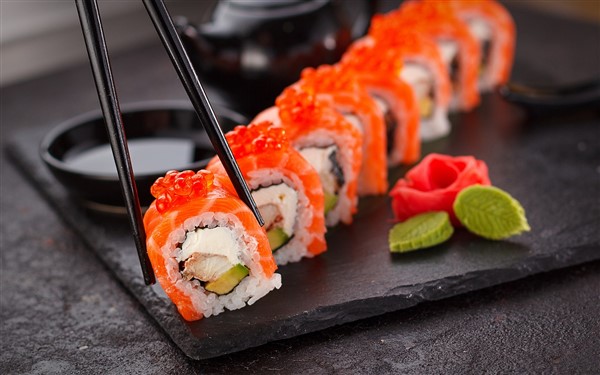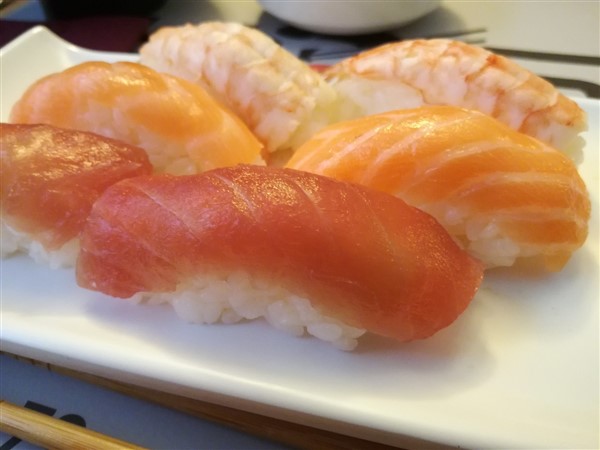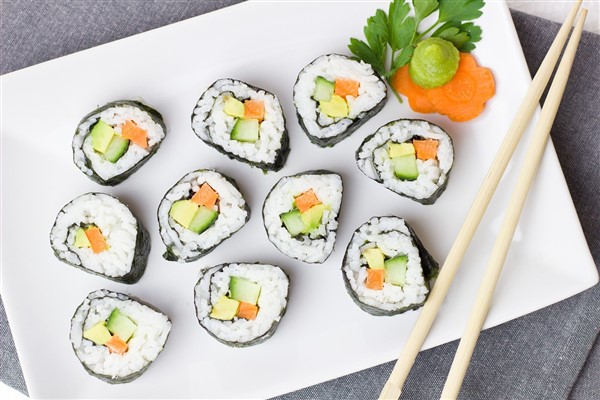Exploring the Delicacies of Japanese Cuisine
Introduction
Sushi, a culinary art that originated in Japan, has become a global sensation. With its delicate flavours, artful presentation, and diverse options, sushi offers a unique gastronomic experience that delights both the senses and the palate. For those new to this culinary world, diving into the world of sushi can be both exciting and overwhelming. This beginner’s guide aims to unravel the mysteries of sushi, from its history and types to etiquette and tips for enjoying this exquisite cuisine.
A Brief History of Sushi
Sushi’s origins can be traced back over a thousand years to Southeast Asia, where people first discovered the practice of fermenting fish and rice to preserve the fish. This method eventually made its way to Japan, where it evolved into the sushi we know today. Originally, the rice was discarded, and only the fermented fish was consumed. Over time, the Japanese began to consume the rice along with the fish, and various forms of sushi emerged.
In the 19th century, Edo (now Tokyo) witnessed the development of nigiri sushi, the style that most people associate with sushi today. The term “nigiri” means “hand-pressed,” and it involves placing a slice of raw fish atop a small bed of vinegared rice. This innovation marked the beginning of the sushi culture that has captivated people around the world.

Types of Sushi
Sushi is a diverse culinary art with a wide range of styles and ingredients. Here are some of the most popular types of sushi:
- Nigiri Sushi: As mentioned earlier, nigiri sushi consists of a slice of raw fish, usually seafood, atop a small oblong mound of vinegared rice. It is often served with a dab of wasabi between the rice and the fish.
- Sashimi: While not technically sushi, sashimi is a crucial component of Japanese cuisine. It comprises thinly sliced, fresh raw fish or seafood, often served with soy sauce and wasabi.
- Maki Sushi: Maki sushi refers to rolled sushi, where ingredients are wrapped in a layer of rice and seaweed (nori). These rolls can be filled with a variety of ingredients, such as fish, vegetables, and even cooked items.
- Temaki: Temaki, or hand rolls, are cone-shaped sushi rolls that are typically larger than traditional maki rolls. They are meant to be eaten with the hands and can be customised with different fillings.
- Chirashi Sushi: Chirashi sushi is a bowl of vinegared rice topped with a colourful assortment of sashimi, vegetables, and garnishes.
- Inari Sushi: Inari sushi consists of pockets of seasoned and sweetened tofu skin filled with vinegared rice. It is a vegetarian-friendly option and is often enjoyed as a light snack.
- Narezushi: This is a traditional form of fermented sushi, where fish is preserved by fermenting it with salt and rice. It is a precursor to modern sushi and is not as widely consumed today.

Sushi Etiquette and Tips for Beginners
Sushi etiquette is an integral part of the dining experience. Here are some essential tips to keep in mind when enjoying sushi:
- Use Chopsticks: While it’s acceptable to eat sushi with your hands, using chopsticks is the traditional method. If using chopsticks, avoid pointing them directly at the sushi chef, as this can be considered impolite.
- Ginger and Wasabi: Ginger and wasabi are served alongside sushi as palate cleansers and flavour enhancers. Take a small amount of each and use them sparingly. It’s customary to use a separate plate for soy sauce and to dip the fish (not the rice) into the sauce.
- Freshness Matters: Sushi is all about the quality and freshness of the ingredients. When dining at a sushi restaurant, choose establishments known for their fresh seafood and skilled chefs.
- Ordering: If you’re new to sushi, don’t hesitate to ask the chef or server for recommendations. They can guide you based on your preferences and help you explore different tastes and textures.
- Wasabi Placement: It’s common for sushi chefs to apply a small amount of wasabi between the fish and rice. However, if you prefer less or no wasabi, you can politely ask the chef to adjust the amount.
- Eat in One Bite: Sushi is designed to be eaten in one bite, allowing you to experience the combination of flavours and textures in a single mouthful.
- Respect the Chef: If you’re sitting at the sushi bar, it’s considered respectful to engage with the chef and express appreciation for their craft. A simple “arigato” (thank you) goes a long way.

Embarking on a Sushi Adventure
For beginners, exploring the world of sushi can be an exciting journey filled with new tastes and cultural experiences. As you embark on this culinary adventure, keep in mind that sushi is not just a meal; it’s a form of art that reflects the traditions, craftsmanship, and culinary innovation of Japan.
Whether you’re indulging in the delicate flavours of nigiri, savouring the vibrant colours of maki rolls, or relishing the purity of sashimi, each bite of sushi offers a unique blend of taste and texture that captures the essence of Japanese cuisine.
To fully appreciate the nuances of sushi, approach your dining experience with an open mind and a willingness to explore. Take the time to learn about the different types of sushi, experiment with flavours, and embrace the cultural aspects of this beloved cuisine.
Summary
Sushi is more than just a meal; it’s a celebration of flavours, an artful presentation, and a connection to Japanese heritage. So, whether you’re enjoying sushi for the first time or embarking on a lifelong sushi journey, remember to savour each bite, appreciate the craftsmanship, and relish in the joy that comes from experiencing this culinary masterpiece.











